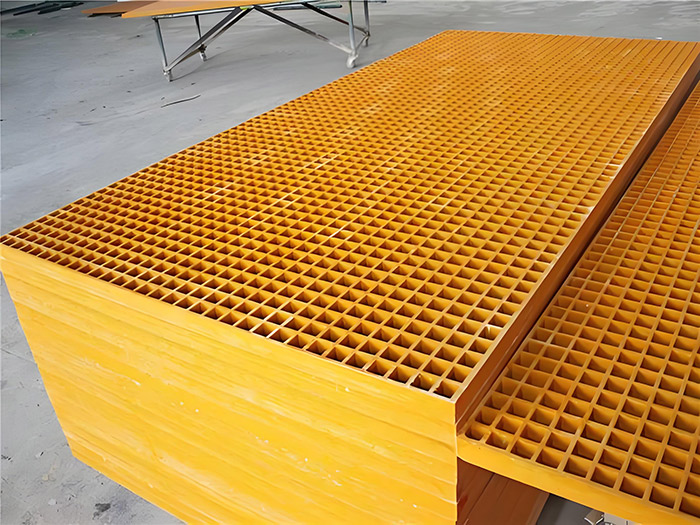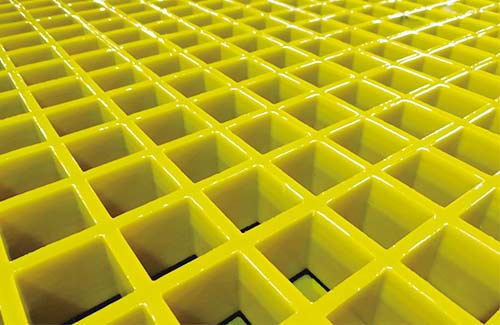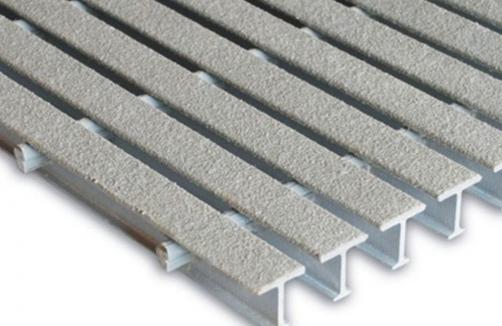Corrosion-Resistant FRP Grating: The Ultimate Solution for Durability and Strength
Introduction
Fiberglass Reinforced Plastic (FRP) grating has emerged as a revolutionary material in various industrial applications, offering exceptional corrosion resistance, durability, and strength. Whether used in chemical plants, marine environments, or infrastructure projects, FRP grating stands out as a superior alternative to traditional materials like steel, concrete, and wood. But what makes FRP grating the ultimate choice for long-term performance? This article explores the key benefits, addresses common questions, and highlights why FRP grating is the go-to solution for demanding environments.
What Is FRP Grating and How Does It Work?

FRP grating is a composite material made by combining fiberglass reinforcement with a polymer matrix, typically resin. This unique composition results in a material that is lightweight yet incredibly strong, with outstanding corrosion resistance. Unlike steel, which rusts when exposed to moisture, or concrete, which cracks under heavy loads, FRP grating remains unaffected by harsh chemicals, saltwater, and extreme weather conditions.
Key Question: How does FRP grating compare to traditional materials in terms of strength and durability?
FRP grating outperforms steel in tensile strength while being significantly lighter, reducing installation costs and structural stress. It also surpasses concrete in load-bearing capacity and resistance to corrosion, making it ideal for industrial platforms, walkways, and mezzanines. Additionally, FRP grating does not conduct electricity, further enhancing safety in environments where electrical hazards are present.
Why Is Corrosion Resistance a Game-Changer?
Corrosion is a major concern in industries dealing with chemicals, acids, or saltwater. Traditional materials like steel and concrete degrade over time, requiring frequent maintenance or replacement. FRP grating, however, is engineered to withstand corrosion without compromising performance. This durability translates to lower lifecycle costs, as businesses spend less on repairs and replacements.
Key Question: What types of industries benefit most from FRP grating’s corrosion resistance?
Chemical manufacturing, oil and gas, marine, and water treatment industries are prime examples. FRP grating prevents rust and deterioration, ensuring safety and compliance with environmental regulations. Moreover, its non-reactive nature means it won’t corrode pipelines or storage tanks, maintaining the integrity of critical infrastructure.
Strength Without Weight: The Advantages of FRP Grating
One of the most significant benefits of FRP grating is its lightweight yet high-strength design. This makes it easier to transport, install, and modify on-site without the need for heavy machinery. Additionally, FRP grating does not expand or contract with temperature changes, unlike steel, which can warp or crack under thermal stress.
Key Question: How does FRP grating enhance safety in industrial settings?
FRP grating’s non-slip surface and electrical non-conductivity reduce slip hazards and prevent short circuits. Combined with its high load-bearing capacity, it provides a stable and secure walking surface even in heavy-traffic areas. Many FRP grating products also meet OSHA standards, ensuring workplace safety.
Cost-Effectiveness and Sustainability
Despite its premium performance, FRP grating offers long-term cost savings. Its resistance to corrosion means fewer repairs, and its lightweight nature reduces shipping and handling expenses. From an environmental perspective, FRP grating is recyclable, making it a sustainable choice for eco-conscious businesses.
Key Question: How does FRP grating contribute to sustainability?
By extending the lifespan of infrastructure and reducing waste, FRP grating minimizes environmental impact. Unlike steel, which requires energy-intensive production, FRP grating uses less energy during manufacturing. Its recyclability also means it can be repurposed at the end of its service life, aligning with green building practices.
Sharing the Knowledge: Why Choose FRP Grating for Your Next Project?
When selecting materials for industrial applications, FRP grating stands out for its unmatched combination of durability, strength, and corrosion resistance. Whether you’re designing a chemical plant, a marine terminal, or an infrastructure project, FRP grating provides a reliable and cost-effective solution. By choosing FRP grating, businesses not only enhance performance but also contribute to sustainability and long-term value.
Conclusión
FRP grating is the ultimate solution for environments where corrosion, strength, and durability are paramount. Its innovative design, cost-effectiveness, and eco-friendly benefits make it a superior choice over traditional materials. If you’re looking to upgrade your infrastructure with a material that lasts, consider FRP grating—your answer to long-term performance and reliability.
By investing in FRP grating, you’re not just choosing a material; you’re selecting a solution that stands the test of time.







